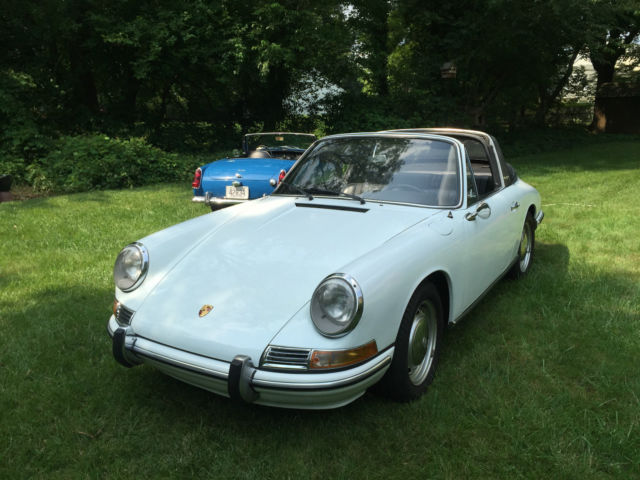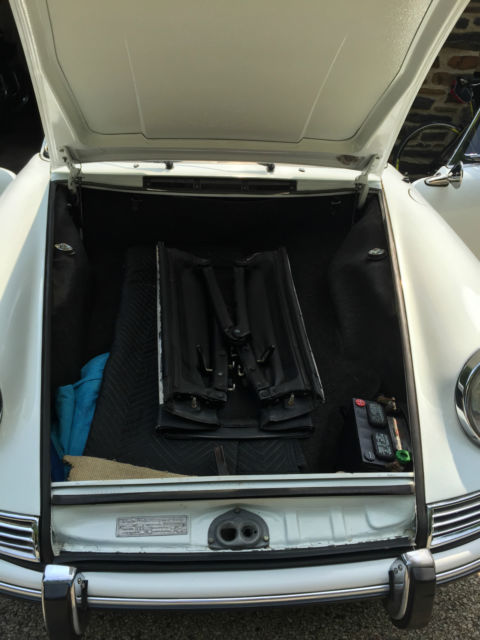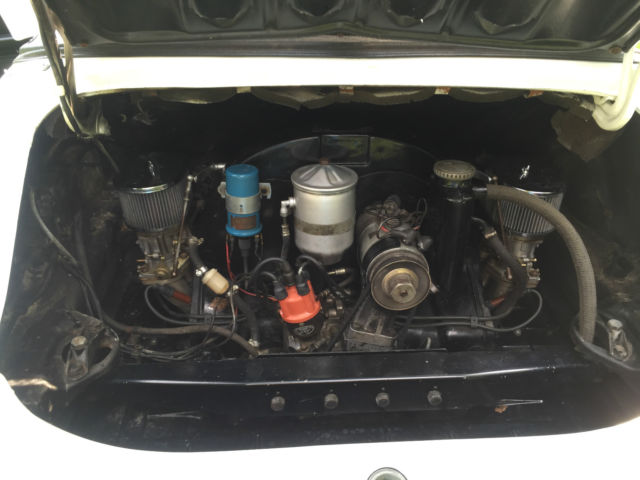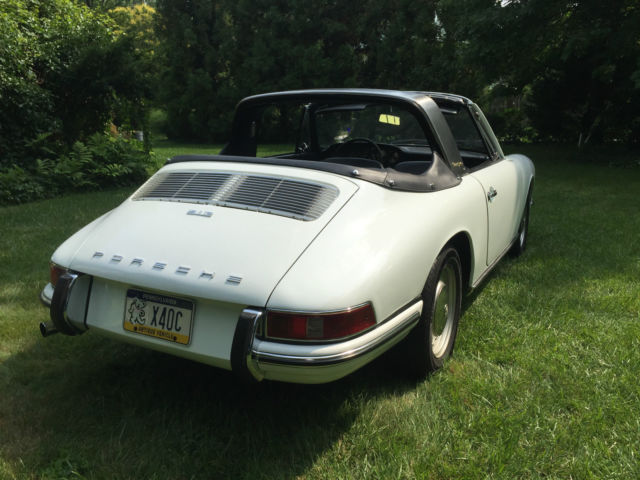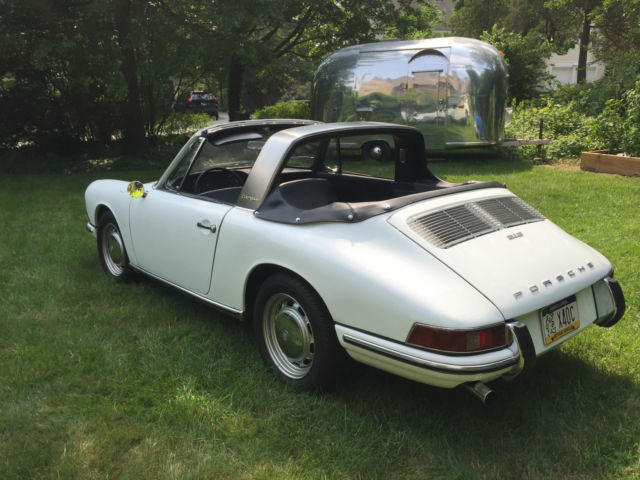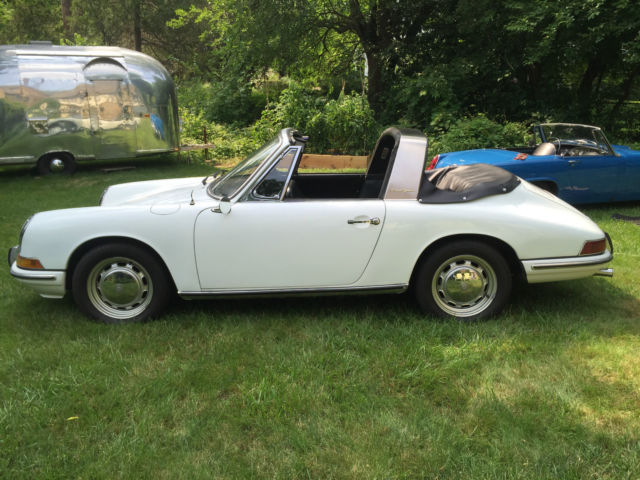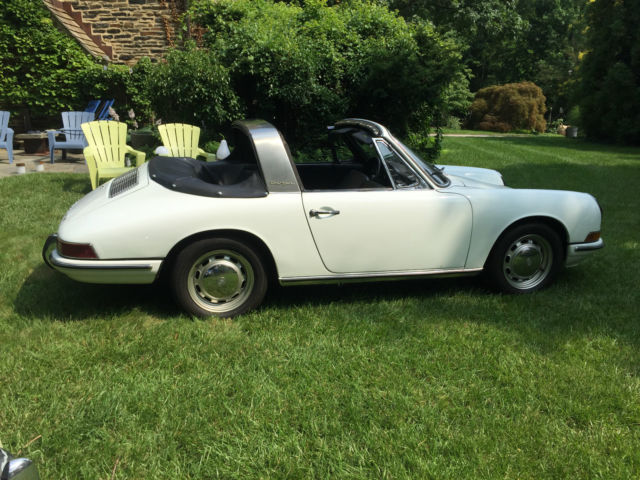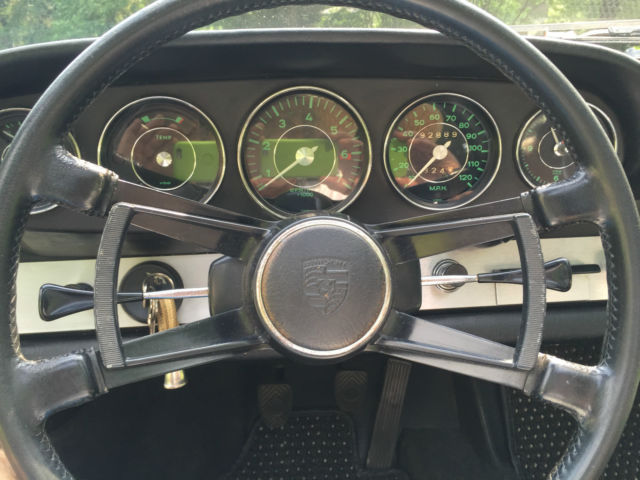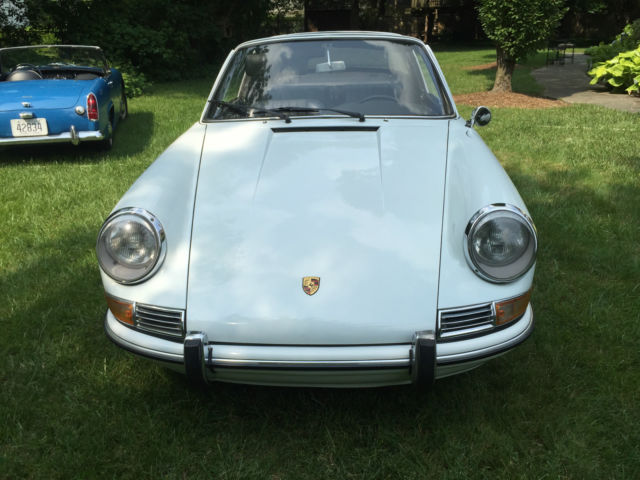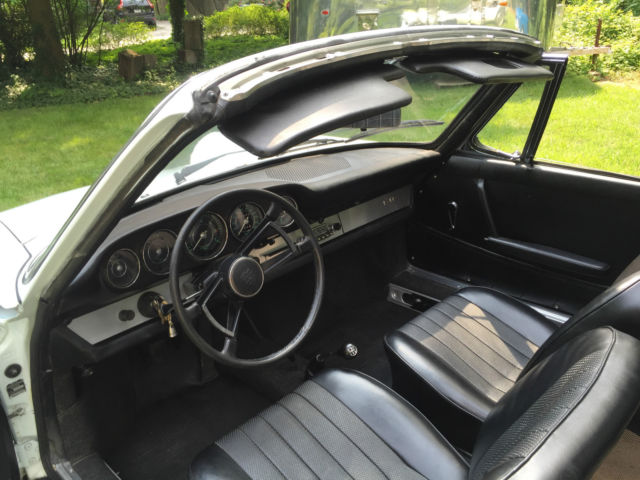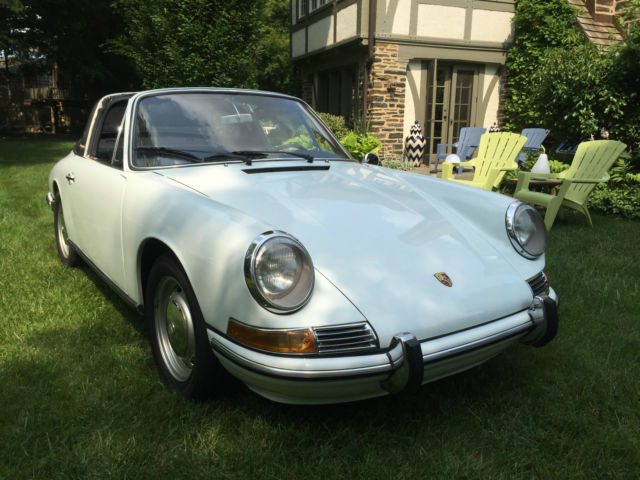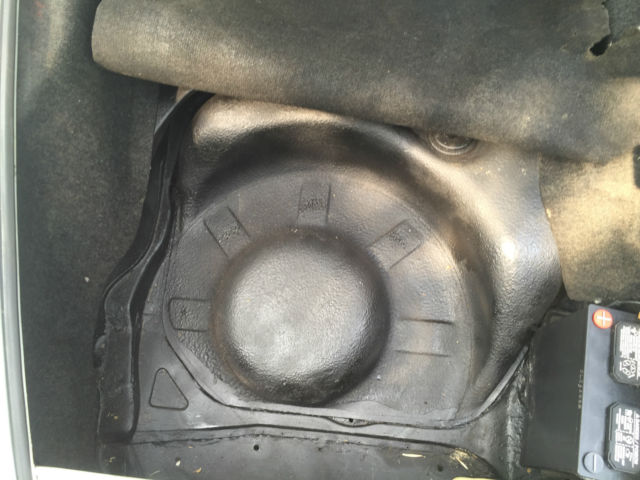1967 Porsche 912 Targa Soft Window
1967 Porsche 912 Targa
Porsche 912 1967 technical specifications | |
|---|---|
| Condition: | Used |
| Item location: | Berwyn, Pennsylvania, United States |
| Make: | Porsche |
| Model: | 912 |
| SubModel: | Targa |
| Type: | 2dr. Targa |
| Trim: | Targa Soft Window |
| Year: | 1967 |
| Mileage: | 93,300 |
| Color: | White |
| Engine size: | 4-cyl. 1582cc/90hp 2x2bbl |
| Number of cylinders: | 4 Cylinder |
| Fuel: | Gasoline |
| Transmission: | Manual |
| Drive type: | RWD |
| Interior color: | Black |
| Vehicle Title: | Clear |
| You are interested? | Contact the seller! |
Description |
|---|
1967 Porsche 912 Soft Window Targain Original White with Black Interior. 5 speed manual transmission. Extremely Rare and Desirable Porsche. Solid Daily DriverGarage Kept, riven only in good weather.
Local Pick-up or arranged transportation by buyer Only.Mileage: 93,300
More photos availible upon request.
Article from HagertyHistory of the 1966-1969 Porsche 912Today, ll but true Porsche enthusiasts may have forgotten that the Butzi Porsche-styled 901 (aka, 11) had a four-cylinder twin for the first five years of production. Introduced in 1965 as a replacement for the venerable old 356, he new four-cylinder Porsche brought the 911’s new design across the entire product line. A 912 is essentially a 911 body paired with a pushrod four-cylinder, hich was actually a slightly detuned variant of the 356SC motor. While the 912 did weigh 133 pounds more than the old 356C, he new body was more aerodynamic and a five-speed gearbox, $75 option for the 912, ided performance. Upon its introduction the 912 sold for $4,700, nd it outsold the 911 by a margin of two to one. Porsche’s 100,000th car was actually a 912, nd it was a Targa outfitted for a German police department.
Outside of the engine compartment, nly badging and interior fitments distinguished the 912 from the 911, ith true base cars having a plastic steering wheel rim and a three-dial dash as opposed to the 911s five-dial unit. A four-speed all-synchromesh transmission was standard with a five-speed optional. Most of the other usual 911 options were available including special order paints, sunroof, nd the unique soft rear window Targa top. For 1969, ike the 911, he 912 rode on a stretched wheelbase with flared fenders and redesigned gauges. 1969 would prove to be the final model year for the 912. The 911 range expanded and a wider cost gap included the range-topping 911s, he mid-level 911E and the base 911T. By 1970, orsche sought to carve out an entry-level market for itself with the Volkswagen-produced 914.
In 1976, hough, ith the demise of the 914 and with the new, ater-cooled, ront-engined 924 not quite ready for public consumption, orsche resuscitated the 912 (called the 912E) for one year only. The 912E utilized the 2.0-liter VW Type IV motor that had previously seen service in the 914, nd it was only available in the American market. For decades, he 912 would languish in the 911’s shadow, amely for having two fewer cylinders. Adding insult to injury, he 912’s ensuing affordability placed them in the hands of unsympathetic owners who subjected the cars to all manner of thoughtless “improvements” and “updates.” Today, s long-hood 911 and 356 prices have increased, o too has interest in 912s, nd the cars are now treated with much more regard than they were even just a few short years ago.
Enthusiasts now recognize that despite a less potent motor, he 912 nevertheless offers all of the quality and styling one would expect from a 1960s 911, ut with easier maintenance as well as better balance and weight distribution. Because it’s still all Porsche, hough, 12s aren't any less expensive to maintain or restore than a 356 or 911, o it is best to stick with the best examples.
" >Today, ll but true Porsche enthusiasts may have forgotten that the Butzi Porsche-styled 901 (aka, 11) had a four-cylinder twin for the first five years of production. Introduced in 1965 as a replacement for the venerable old 356, he new four-cylinder Porsche brought the 911’s new design across the entire product line. A 912 is essentially a 911 body paired with a pushrod four-cylinder, hich was actually a slightly detuned variant of the 356SC motor. While the 912 did weigh 133 pounds more than the old 356C, he new body was more aerodynamic and a five-speed gearbox, $75 option for the 912, ided performance. Upon its introduction the 912 sold for $4,700, nd it outsold the 911 by a margin of two to one. Porsche’s 100,000th car was actually a 912, nd it was a Targa outfitted for a German police department.
Outside of the engine compartment, nly badging and interior fitments distinguished the 912 from the 911, ith true base cars having a plastic steering wheel rim and a three-dial dash as opposed to the 911s five-dial unit. A four-speed all-synchromesh transmission was standard with a five-speed optional. Most of the other usual 911 options were available including special order paints, sunroof, nd the unique soft rear window Targa top. For 1969, ike the 911, he 912 rode on a stretched wheelbase with flared fenders and redesigned gauges. 1969 would prove to be the final model year for the 912. The 911 range expanded and a wider cost gap included the range-topping 911s, he mid-level 911E and the base 911T. By 1970, orsche sought to carve out an entry-level market for itself with the Volkswagen-produced 914.
In 1976, hough, ith the demise of the 914 and with the new, ater-cooled, ront-engined 924 not quite ready for public consumption, orsche resuscitated the 912 (called the 912E) for one year only. The 912E utilized the 2.0-liter VW Type IV motor that had previously seen service in the 914, nd it was only available in the American market.
For decades, he 912 would languish in the 911’s shadow, amely for having two fewer cylinders. Adding insult to injury, he 912’s ensuing affordability placed them in the hands of unsympathetic owners who subjected the cars to all manner of thoughtless “improvements” and “updates.” Today, s long-hood 911 and 356 prices have increased, o too has interest in 912s, nd the cars are now treated with much more regard than they were even just a few short years ago.
Enthusiasts now recognize that despite a less potent motor, he 912 nevertheless offers all of the quality and styling one would expect from a 1960s 911, ut with easier maintenance as well as better balance and weight distribution. Because it’s still all Porsche, hough, 12s aren't any less expensive to maintain or restore than a 356 or 911, o it is best to stick with the best examples.
1967 Porsche 912 Info- 0" >
- Body Styles
- 2dr Coupe
- 2dr Targa
- 0" >
- Engine Types
- 4-cyl. 1582cc/90hp 2x2bbl
